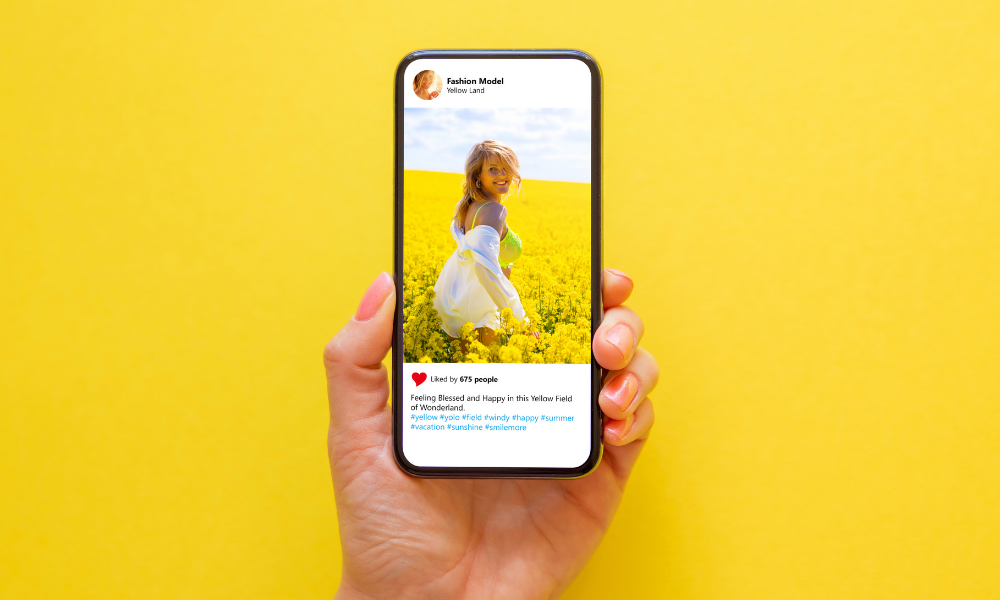Social Media Platforms 101: Choosing the Right Ones for Your Business
So...how’s your social media marketing going?
9 min read
Kari Switala
:
October 10, 2023

According to Pew Research, 72% of all Americans use some type of social media. And the typical social media user isn’t just hanging out on Facebook: They’re logging into an average of 7.2 different social platforms every month…and spending almost 2.5 hours a day on those platforms.
It’s clear that social media marketing is a must-have for businesses today. But what should that look like for your business? Do you need to be active on every social media platform, or will one or two do? Can you just post the same stuff on every site and call it a day? How do you know what to post where?
If building a successful social media marketing strategy has you stumped, we’ve got you covered. Read on for answers to these questions and more.
First of all, let us put you at ease — you don’t have to be active on every social media platform to have an effective online presence. In fact, you shouldn’t be.
Yep, you read that right. This is a don’t-spread-yourself-too-thin, quality-over-quantity sort of situation.
First of all, we’re guessing you don’t have the budget or time to invest in building a dynamic, engaging presence on every social media platform (most businesses don’t). Even if you do, your target audience isn’t likely to be found on all those sites (and if your audience isn’t there, why should you be?).
So how many platforms should you be active on? There’s no one right answer to this question, but for most businesses, two to three platforms will be sufficient. To determine which platforms to build a presence on, you first need to understand your target audience:
Who are they?
Where are they spending their time online?
What kind of content are they engaging with?
Once you understand your audience, it’s easier to know where to find them and how to engage with them effectively.
Need help choosing which platforms to use for your target audience? Check out this blog.
In a word: no.
Ok, technically you can do whatever you want…we’re not the boss of you. But hear us out.
While posting the same thing to all your social media accounts may seem like a time-saving option, it’s not an effective social media strategy.
Every platform has distinct characteristics and caters to different demographics, so what does well on one may not work on another. For example, a post that gets a lot of engagement on Facebook might tank on LinkedIn or Instagram (or vice versa).
Plus, sharing different content on each platform builds value for your followers and encourages them to engage with you on multiple platforms.
So don’t take the easy way out here. If you want to improve your social media engagement, take the time to customize your content for each platform and the audience you’re targeting there.
Because each social platform offers different advantages and targets different demographics, a successful social media marketing strategy requires that you understand what each platform is made for and who it’s most likely to attract.
With more than 2.9 billion monthly active users, Facebook is the world’s most widely used social media platform.
With 2.5 billion users, YouTube is the second most popular social media site in the world after Facebook and the second most popular website in the world after Google.
This video-sharing site gives you the chance to establish your own channel and post longer videos than you can on other sites (up to 15 minutes, though verified accounts can post longer ones).
At 950 million members, LinkedIn has a decidedly smaller audience than Facebook or YouTube, but it’s one of the only social sites specifically focused on business networking. LinkedIn is the place to connect with industry professionals, potential employees, and B2B customers and prospects.
With more than 2.3 billion active users, Instagram ranks in the top 5 social networking platforms worldwide. This mobile-first photo and video-sharing site is especially popular among users 18-29 years old.
With more than 500 million monthly active users, X (formerly known as Twitter) is a microblogging platform.
With 1 billion active users and counting, TikTok is a rising star among social media platforms. Young adults aged 18-24 make up more than half of TikTok creators, and almost half of users are under 30.
If you want to reach Gen Z, TikTok is the place to be.
This platform is focused on creating and sharing short-form videos. It has top-notch built-in video editing capabilities, making it super easy to use if you’re just getting started with video.
While not as big as some of the other social sites, with 465 million users, Pinterest’s reach isn’t too shabby. This visually focused app is geared toward discovery — finding new ideas, gathering inspiration, building mood boards, and so on.
On Pinterest, people are there to be inspired. In other words, it’s the perfect place to introduce them to your brand!
We know this is a lot to keep track of…especially when you already have a lot on your plate! If thinking about the details of social media marketing makes you feel overwhelmed, or if you don’t have the time to build a truly successful social media marketing strategy, we’d love to help!
Schedule a FREE, no obligation exploratory call to discover how Wild Fig can help manage your social media marketing and get your business seen online.
In the meantime, download our top social media tips for Facebook, LinkedIn, X, and Instagram here!


So...how’s your social media marketing going?

Part 6 of our Key Metrics Series With its focus on visual content and younger target demographic, Instagram is Facebook’s hipper, more creative...

Want to lighten up your social media marketing game? Try making funny videos with your team!